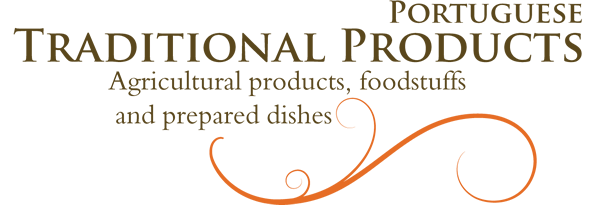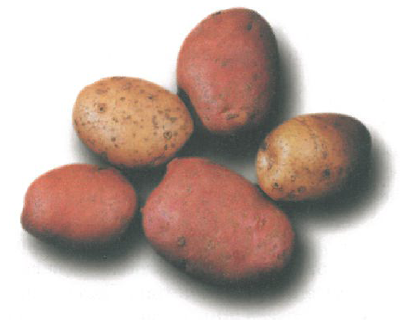Description: The Batata de Trás-os-Montes PGI is a tuber of Solanum tuberosum L., a plant of the Solanaceae family, commonly known as the potato plant, grown under the special agri-environmental conditions found in the mountains and valleys of Trás-os-Montes. The cultivars used are: Desiree, Kennebec, Jaerla and Atlantic. Its shape is roughly cylindrical and tends to vary depending on the variety, but is homogeneous within each variety and batch. The skin consists of a layer of suberised cells, light in colour, i.e. from dirty white to a reddish chestnut. When cut, it has a moist, yellowish-white and perfectly even appearance, without eyes. The outside has a suberised layer, almost always slightly darker (light pink or reddish) than the inside.
Production method: The method of production has not changed substantially over time. Potato-growing — practised for a maximum of three consecutive years on the same parcel — may be extensive (in which case the potatoes are grown in rotation with cereals or other annual crops) or intensive (i.e. market gardening in rotation with vegetables or maize). A key operation is the manuring of the soil in the winter. This involves the use of natural organic material, a practice which is typical of the region and, together with the making of furrows and the spacing used (60×40 cm), contributes decisively to the organoleptic and chemical characteristics of the product. The concentration, market preparation and packing of the product must take place in the region of origin in order to allow control and complete traceability and provide the consumer with a genuine product whose origin can be guaranteed.
Distinctive features: Thanks to the agri-environmental conditions found in Trás-os-Montes, in particular the warmth provided by well manured and hoed soils, the Batata de Trás-os-Montes has a pleasant, very typical and slightly sweet taste, a similarly pleasant earthy smell and, compared with other potatoes, an uncommonly high starch content, which averages 78% in the dry matter.
Production area: Batata de Trás-os-Montes PGI potatoes are grown in the municipalities of Boticas, Bragança, Chaves, Macedo de Cavaleiros, Montalegre, Valpaços, Vila Pouca de Aguiar and Vinhais, the parishes of Carvas, Fiolhoso, Jou, Palheiros, Valongo de Milhais and Vilares in the municipality of Murça, the parishes of Pópulo, Ribalonga and Vila Verde in the municipality of Alijó, the parishes of Aguieiras, Bouça, Fradizela, S. Pedro Velho, Torre de D. Chama, Vale de Gouvinhas and Vale de Telhas in the municipality of Mirandela, the parishes of Agrobom, Gebelim, Pombal, Saldonha, Sambade, Soeima and Vales in the municipality of Alfândega da Fé, and the parishes of Argozelo, Carção, Matela, Pinelo and Santulhão in the municipality of Vimioso.
History: Together with the cultivation methods used, ripening, picking and storage conditions, the climate of the region gives the tuber a sweet taste, which stems from its exceptional sugar/starch content, and an ideal texture for absorbing the sauce of fatty meats (pork), the latter being a mainstay of cooking in the region. These characteristics have given the product a unique fame and reputation and enabled it to survive over the generations, thus contributing to the sustainability of family farms in the region. Expert writings dating back to the end of the 18th century provide proof of the economic and social and cultural importance of the product, its reputation and long history.
Product specification (pdf)
Producer group
Coop. Agrícola Norte Transmontano, C. R. L
Control and certification body
Tradição e Qualidade - Assoc. Inter-prof. para os Produtos Agro-alimentares de Trás-os-Montes
Control plan
Control plan (pdf)
Publication in EU official journal
Regulamento (CE) n.º 148/2007 da Comissão de 15.02.2007 - L 46/15
Regulamento (CEE) n.º 2081/92 do Conselho de 06.01.2006 - C 3/7



